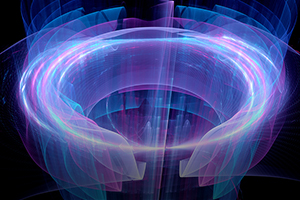Spotlight on Fusion
 A lot has been happening in the quest for controlled nuclear fusion – regarded to be the holy grail of cheap, efficient and sustainable energy. In Germany, scientists recently turned on the largest fusion machine in the world. Using only 2 megawatts of microwave radiation, the stellarator-type device, known as the Wendelstein 7-X (W7X), was able to produce and sustain super-hot blobs of hydrogen plasma for a quarter of a second, reaching temperatures of 80 million degrees Celsius. In March, the researchers plan to increase the heating power to 20 megawatts with a goal of sustaining the plasma for as long as 30 minutes. By 2019, the reactions will be switched over to deuterium, which will increase the energy output.
A lot has been happening in the quest for controlled nuclear fusion – regarded to be the holy grail of cheap, efficient and sustainable energy. In Germany, scientists recently turned on the largest fusion machine in the world. Using only 2 megawatts of microwave radiation, the stellarator-type device, known as the Wendelstein 7-X (W7X), was able to produce and sustain super-hot blobs of hydrogen plasma for a quarter of a second, reaching temperatures of 80 million degrees Celsius. In March, the researchers plan to increase the heating power to 20 megawatts with a goal of sustaining the plasma for as long as 30 minutes. By 2019, the reactions will be switched over to deuterium, which will increase the energy output.
Shortly after these results were released, however, Chinese physicists reportedly succeeded in producing hydrogen plasma at a temperature of 50 million degrees Celsius for a whopping 102 seconds using their own machine – the Experimental Advanced Superconducting Tokamak (EAST).
The ultimate goal for both teams is to reach the 100 million degree mark, which is considered to be the ideal temperature for starting and maintaining the fusion reactions. And while the results of these experiments show that fusion power is possible, neither of these generators is designed to produce usable amounts of energy. But researchers are hopeful that decades of work will pay off in the end with clean, practically limitless energy that could literally change the world.
For information: Max Planck Institute for Plasma Physics, Teilinstitut Griefswald, Wendelsteinstrasse, D-17491 Greifswald, Germany; phone: +49-3834-88-1000; email: info@ipp.mpg.de; Web site: http://www.ipp.mpg.de/2285/en Hefei Institutes of Physical Science, Institute of Plasma Physics, No. 350, Shushanhu Road, Hefei, China; phone: +86-0551-6559-5691; Web site: http://english.hf.cas.cn/au/